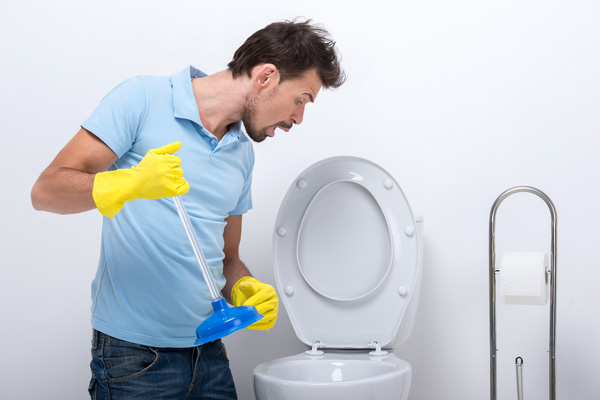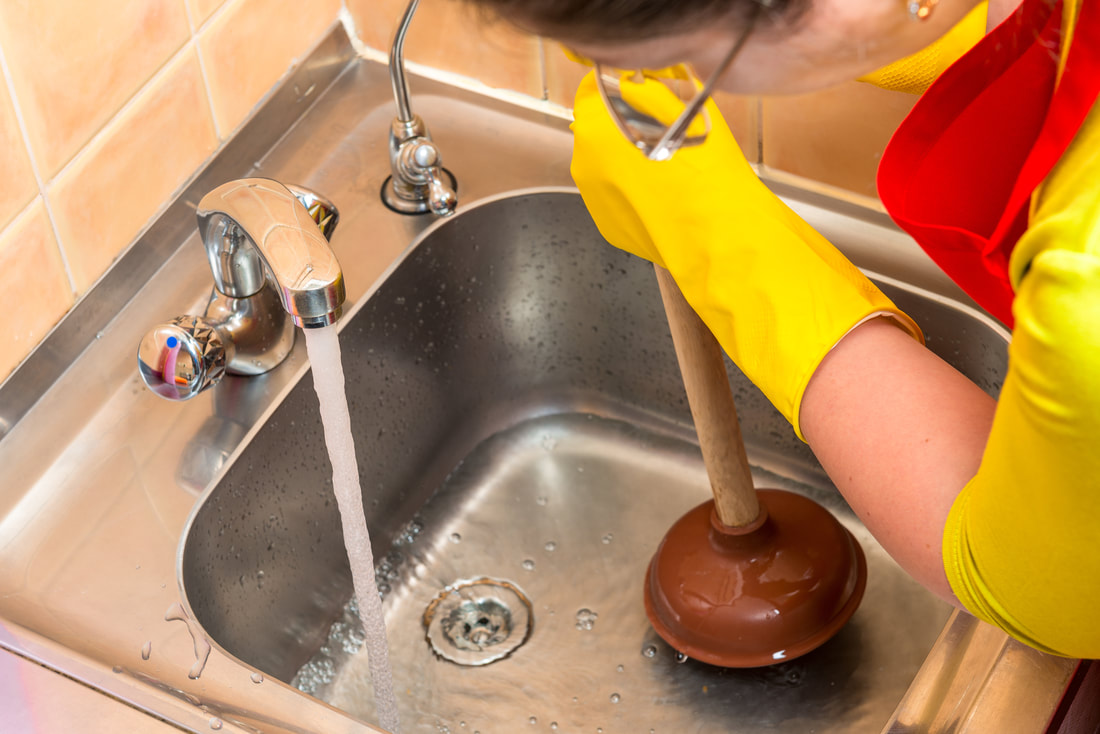Ways to Properly Apply Plunger and Drain Cleaners: Pro Guidance
Ways to Properly Apply Plunger and Drain Cleaners: Pro Guidance
Blog Article
We have come across this great article pertaining to How to Use a Plunger to Unclog a Toilet or Drain directly below on the net and believe it made sense to quickly share it with you on this site.

Intro
Appropriate upkeep of family drains is necessary for avoiding obstructions and making sure smooth water flow. One of the trick tools in every home owner's toolkit is the bettor, alongside various drain cleaners created to take on stubborn clogs efficiently. This short article checks out exactly how to utilize plungers and drain cleaners efficiently to keep your drains moving openly.
Area 1: Recognizing Plungers
Kinds of Plungers
There are several sorts of bettors offered, each developed for different sorts of drains and clogs. One of the most usual types include mug plungers, flange bettors, and accordion plungers.
How Plungers Job
Plungers work with the principle of developing pressure and suction to displace blockages. When properly used over a drainpipe, they produce a vacuum that can pull out debris or separate blockages.
Picking the Right Bettor
Choosing the right plunger depends on the sort of drainpipe and the nature of the clog. Mug bettors are perfect for sinks and tubs, while flange bettors are better suited for bathrooms because of their layout.
Common Mistakes with Plungers
Preventing these errors makes certain effective plunging: improper seal around the drain, insufficient force, and not clearing surrounding debris.
Area 2: Making Use Of Plungers Properly
Prep work
Prior to plunging, guarantee the plunger covers the drain entirely and creates a tight seal. Clear any visible particles around the drain opening.
Technique
Beginning with mild plunging motions to construct suction. Boost pressure progressively, utilizing a steady rhythm. Repeat as essential up until the drainpipe removes.
Troubleshooting Tips
If diving doesn't function, attempt readjusting the seal, using oil jelly for a much better seal, or utilizing a various type of bettor.
Area 3: Understanding Drainpipe Cleaners
Kinds Of Drain Cleansers
Drain cleansers can be chemical or enzymatic. Chemical cleaners use strong chemicals to dissolve blockages, while enzymatic cleaners make use of all-natural enzymes to break down organic matter.
Just How Drainpipe Cleaners Job
Chemical cleansers react with obstructions to dissolve them, while chemical cleansers break down natural materials like hair and grease without harming pipelines.
Safety and security Considerations
Always put on handwear covers and eye defense when utilizing chemical drainpipe cleansers. Guarantee ample air flow and follow supplier guidelines very carefully.
Eco-Friendly Alternatives
Think about using vinegar and cooking soda or enzyme-based cleaners for eco-friendly choices that are safer for pipes and the environment.
Section 4: Making Use Of Drain Cleansers Effectively
Application Strategies
Put chemical cleansers straight right into the drain opening. Allow them to benefit the recommended time before flushing with hot water. Enzymatic cleansers ought to sit over night.
Safety measures
Stay clear of mixing various sorts of cleansers, as this can generate harmful fumes. Never make use of chemical cleansers in conjunction with a plunger, as spilling can happen.
Handling Persistent Clogs
For persistent clogs, consider using a plumbing snake or calling an expert plumbing professional to stop damage to pipes.
Conclusion
Finally, comprehending exactly how to utilize bettors and drainpipe cleansers efficiently is necessary for preserving healthy plumbing systems. By choosing the right tools and techniques, home owners can tackle small clogs and protect against major plumbing problems down the line.
How To Properly Use A Plumbing Snake To Clear Drains
When any drain clogs in our home arise, we tend to gravitate toward the plunger and little else. In cases where the plunger and its vacuum-created pressure are not able to clear clogs, many immediately move to harmful chemicals or simply call their plumber to fix the issue.
we’re happy to help with all drain cleaning needs and concerns. This includes informing you on a few other home remedies you may have at your disposal for minor to moderate clogs, one of which is the use of a plumbing snake. Many people have never used one of these before – let’s go over the steps to take when your drain clogs and you have a plumbing snake available.
Attempt Plunger Use
The first step here, as we noted above, should indeed be to grab your plunger when you notice a drain clog and attempt to resolve it this way. If you’re unsure how to use a particular type of plunger, our plumbers can answer any questions you have. If this doesn’t do the trick, however, you move on to the snake.
Locate And Prepare Snake
A plumbing snake is a metal or plastic device that’s generally about a quarter of an inch thick. It’s design with significant extensions, meant to reach down into your clogged drain and push the clog out. Snakes also contain drain augers that will latch onto and push stubborn blockages.
If your plunger doesn’t clear a clog, locate your snake and bring it to the drain in question. We also recommend keeping a bucket nearby to collect the clog once you pull it out, plus we’d advise wearing goggles and possibly protective gloves.
Feed Snake
Once you’re ready to go, feed the snake slowly down the drain, using the crank device it comes with to keep it moving until it finds the clog. Once this happens, much of the clog will be latched onto the coil so you can pull it out, while the rest will simply break up and flow downward.
Detach Debris
Remove the snake slowly from the drain, and once you’ve done so, pick off any debris that’s stuck to the coil. This is another area where wearing gloves is a must.
Flush Drain
Finally, take a few minutes to ensure the snake has done its job correctly. If you’ve been using it on a toilet, flush the toilet a couple times and make sure everything flows well. If you’ve used it on a different drain, flush it with some room temperature water.
https://www.mybuddytheplumber.com/blog/how-to-properly-use-a-plumbing-snake-to-clear-drains/

Application Strategies
Put chemical cleansers straight right into the drain opening. Allow them to benefit the recommended time before flushing with hot water. Enzymatic cleansers ought to sit over night.
Safety measures
Stay clear of mixing various sorts of cleansers, as this can generate harmful fumes. Never make use of chemical cleansers in conjunction with a plunger, as spilling can happen.
Handling Persistent Clogs
For persistent clogs, consider using a plumbing snake or calling an expert plumbing professional to stop damage to pipes.
Conclusion
Finally, comprehending exactly how to utilize bettors and drainpipe cleansers efficiently is necessary for preserving healthy plumbing systems. By choosing the right tools and techniques, home owners can tackle small clogs and protect against major plumbing problems down the line.
How To Properly Use A Plumbing Snake To Clear Drains
When any drain clogs in our home arise, we tend to gravitate toward the plunger and little else. In cases where the plunger and its vacuum-created pressure are not able to clear clogs, many immediately move to harmful chemicals or simply call their plumber to fix the issue.
we’re happy to help with all drain cleaning needs and concerns. This includes informing you on a few other home remedies you may have at your disposal for minor to moderate clogs, one of which is the use of a plumbing snake. Many people have never used one of these before – let’s go over the steps to take when your drain clogs and you have a plumbing snake available.
Attempt Plunger Use
The first step here, as we noted above, should indeed be to grab your plunger when you notice a drain clog and attempt to resolve it this way. If you’re unsure how to use a particular type of plunger, our plumbers can answer any questions you have. If this doesn’t do the trick, however, you move on to the snake.
Locate And Prepare Snake
A plumbing snake is a metal or plastic device that’s generally about a quarter of an inch thick. It’s design with significant extensions, meant to reach down into your clogged drain and push the clog out. Snakes also contain drain augers that will latch onto and push stubborn blockages.
If your plunger doesn’t clear a clog, locate your snake and bring it to the drain in question. We also recommend keeping a bucket nearby to collect the clog once you pull it out, plus we’d advise wearing goggles and possibly protective gloves.
Feed Snake
Once you’re ready to go, feed the snake slowly down the drain, using the crank device it comes with to keep it moving until it finds the clog. Once this happens, much of the clog will be latched onto the coil so you can pull it out, while the rest will simply break up and flow downward.
Detach Debris
Remove the snake slowly from the drain, and once you’ve done so, pick off any debris that’s stuck to the coil. This is another area where wearing gloves is a must.
Flush Drain
Finally, take a few minutes to ensure the snake has done its job correctly. If you’ve been using it on a toilet, flush the toilet a couple times and make sure everything flows well. If you’ve used it on a different drain, flush it with some room temperature water.
https://www.mybuddytheplumber.com/blog/how-to-properly-use-a-plumbing-snake-to-clear-drains/

I'm just very eager about Here's How to Correctly Use a Toilet Plunger and I really hope you liked the new blog entry. For those who appreciated our blog entry please do not forget to share it. Thanks a lot for going through it.
Book Now! Report this page